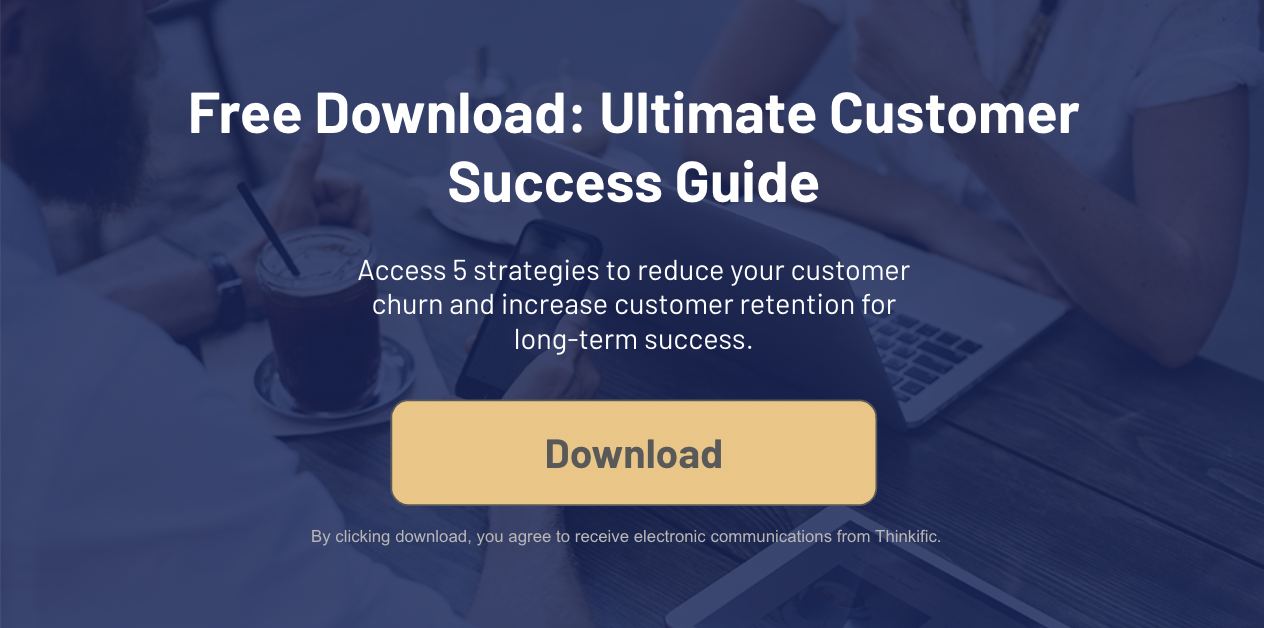Customer relationships are bonds that, once formed, hold the potential for deepening and expansion. Tapping into this potential is where the strategy of customer success upsell shines.
By amplifying the value of products or services that customers have already engaged with, businesses create avenues for enhanced revenue streams.
The merits of customer success upselling go beyond the bottom line. When executed adeptly, upselling doesn’t merely bring in extra revenue – it cements the relationship between the brand and the customer, building a resilient and loyal clientele.
Existing customers come with a pre-established trust, a foundation that businesses can capitalize on by introducing them to new features, offerings, or solutions.
Focusing on upselling to these seasoned customers carries tangible benefits. With firsthand experience of a brand’s worth, they’re naturally more open to new propositions. Upselling to them not only reinforces their bond with the brand but also increases their chances of evolving into steadfast brand advocates.
In an era where consumers are inundated with options, nurturing and growing these pre-existing relationships emerges as common sense.
Skip ahead:
- Understanding Customer Success Upsells
- Leveraging Customer Success for Upsell Opportunities
- Effective Upselling Strategies
- Implementing Successful Upsell Campaigns
- Customer Success Upsell Best Practices
- Conclusion
- Frequently Asked Questions
Understanding Customer Success Upsells
In the competitive landscape of business, merely acquiring new customers isn’t enough. The real challenge lies in retaining them and maximizing their lifetime value. At the heart of this lies the principle of Customer Success Upsell.
Customer success upsell is more than just a tactic – it’s a strategic approach. Imagine a cafe you frequently visit. One day, after realizing you always order the same latte, the barista suggests you try a new flavor syrup, believing you’d enjoy it based on your taste.
This is a simple form of upselling based on understanding your preferences and trust in the barista’s recommendation.
Similarly, businesses employ customer success upselling by tapping into existing relationships. It’s not about pushing a sale but elevating the user experience. Companies leverage a detailed understanding of their customer’s needs, preferences, and goals to introduce additional services or products seamlessly.
When done right, it feels like a natural progression rather than a sales pitch.
The role of the customer success team in this process is irreplaceable. Totango, a leader in customer success platforms, highlighted that companies with a dedicated customer success team saw a clear ROI after introducing upselling strategies.
This is because the customer success team, through regular interactions, gathers insights that other teams may overlook. They can identify gaps in the customer’s current utilization of a product or service, which might be filled with an additional feature or service offering.
For instance, consider an online course platform. If the customer success team observes that a client is consistently having high enrollment numbers in their introductory courses, they might suggest introducing an advanced module or integrating third-party tools to engage learners further.
Here, the recommendation stems from observed needs and behavior rather than a generic sales strategy.
Metrics are the compass that guide and validate upselling strategies. Among the most critical is the Average Revenue Per User (ARPU). An increase in ARPU after introducing upsell strategies is a clear indicator of their effectiveness.
Next, the upsell conversion rate sheds light on how many customers, upon being presented with an upsell opportunity, opt for it. A higher conversion rate generally points towards the relevancy of the upsell offers and the effectiveness of the customer success team’s approach.
Lastly, while financial metrics are critical, they should be balanced with qualitative ones like customer satisfaction scores post-upsell.
According to a study by Bain & Company, a 5% increase in customer retention can lead to a 95% increase in profits. If post-upsell satisfaction rates dip, it’s an early warning sign that the upsell might not be providing the perceived value.
Understanding and implementing customer success upsell is an intricate balance between data-driven insights, trust-building, and genuinely enhancing the customer experience. It’s the art and science of knowing when to introduce what to whom, and in the world of business, it’s a game-changer.
Leveraging Customer Success for Upsell Opportunities
Customer success acts as the lifeblood, ensuring sustained growth and deeper engagements. For businesses, especially those in the realm of e-learning authoring, it’s not just about presenting more products or services – it’s about nurturing relationships and ensuring customers attain maximum value.
Let’s delve into how companies can harness customer success to unlock powerful upsell opportunities.
Building Strong Customer Relationships
Customer relationships form the cornerstone of any successful upselling strategy. The beauty of it lies not in the momentary transaction but in the cumulative trust and value built over time.
Cultivating loyalty and trust is akin to a gardener nurturing a sapling – it requires consistent care, patience, and understanding.
Businesses should engage with their customers, not as mere revenue sources but as partners in a journey. Regular check-ins, feedback sessions, and even simple gestures like acknowledging milestones can deepen the bond.
Providing personalized and proactive support goes beyond just addressing problems. It’s about anticipating needs and offering solutions even before they become issues. Imagine a customer facing an issue with a particular component in an online webpage builder.
Before they reach out, a representative gets in touch with a solution or workaround. Such proactive measures can create a sense of belonging. A report by Accenture highlighted that 91% of consumers are more likely to shop with brands that recognize, remember, and provide them with relevant offers and recommendations.
Identifying customer needs and pain points is the compass guiding this journey. Through data analytics, surveys, and direct interactions, businesses can gain insights into where their product is excelling and where it’s falling short.
This knowledge becomes the bedrock for any upsell strategy. If a business knows a particular group of users often requires additional support for advanced features, they might consider offering specialized training sessions as an upsell.
Maximizing Product Adoption and Value
The journey doesn’t end once a customer purchases a product. The real voyage begins in ensuring they make the most of it.
Helping customers realize the full potential of their existing products is the first step. By creating and sharing resources like webinars, tutorials, training sessions , and blog posts, and organizing them into online courses, or even an online academy like Hootsuite, businesses can help customers make the best of their products and services. In the case of SaaS businesses, they can even use an online academy to increase product knowledge and adoption, while using online courses as a natural stepping stone to upsell customers to more advanced products and features. According to a report by TSIA (Technology Services Industry Association), trained customers are 68% more likely to use a product than those who don’t receive training.
Learn more: How Hootsuite implemented the Customer Success Upsell with Hootsuite Academy
Monitoring and optimizing customer usage and adoption is a continuous cycle. By employing tools like user analytics and behavior tracking, businesses can gain granular insights into how customers are interacting with their products.
For instance, if an analytics dashboard shows that a majority of users frequently use a basic video editing tool but avoid advanced modules, it might be an indication of a learning curve. This insight can be the gateway for an upsell – perhaps an advanced training course or a simplified version of the advanced module.
In essence, leveraging customer success for upselling is about deepening engagement, understanding needs, and ensuring customers always have the right tools and knowledge to succeed.
As businesses nurture this philosophy, they not only increase their revenue streams but also solidify their place as trusted partners in their customers’ growth stories.
For information on customer training, we’ve developed a customer training program which you can find here.
Effective Upselling Strategies
Upselling is an art and a science combined. In the competitive business landscape, simply having a product isn’t enough. To maximize revenue and customer value, businesses must harness the power of effective upselling.
These strategies, when executed correctly, not only augment revenue but also enhance customer relationships and loyalty.
Identifying Upsell Opportunities
Understanding the customer lies at the core of any successful upselling strategy.
Analyzing customer data and behavior provides the first layer of insights. By diving deep into purchasing patterns, feedback, and interactions, businesses can understand the unique needs and preferences of each customer.
For instance, a retail store might notice that customers who buy running shoes often come back looking for running gear later. This data-driven approach can point to potential upsell avenues, even before the customer realizes the need.
Recognizing signs of expansion potential is vital for timing. This might manifest as a rise in inquiries about a product’s premium features or increased usage intensity. If a software user frequently exceeds their storage limit or seeks features outside their current package, it signals readiness for an upgraded package.
Segmenting customers for targeted upsell offers allows businesses to be precise. This precision ensures that upsell offers are not blanket propositions but tailored messages. For example, a cosmetic company might segment its audience based on age, offering anti-aging products to one segment while focusing on acne control for another.
Tailoring Upsell Offers
Customizing offers based on customer needs and goals is paramount. A business-to-business software company might offer additional security features to a client concerned about data breaches, while for another client focused on user experience, interface upgrades might be more relevant.
Emphasizing additional value and benefits takes the proposition from a mere transaction to value addition. Rather than just presenting a pricier version, businesses should articulate how this upsell translates to enhanced utility, convenience, or savings.
Strategic pricing and packaging play pivotal roles. Offering bundled products, tiered pricing, or even loyalty discounts can create a perception of value. For instance, a telecom company might offer a discounted package for combining mobile, internet, and cable services.
Cross-Selling Strategies to Enhance Customer Value
Just as a gardener knows which plants complement one another, businesses must identify products or services that align with their customers’ existing preferences, thereby increasing customer value.
Identifying complementary products or services can be a goldmine. A customer purchasing a laptop might benefit from software licenses or extended warranties, enhancing both the product value and the sale’s value.
Promoting cross-selling opportunities should be timely and contextual. A car dealer, after selling a vehicle, might introduce customers to car maintenance packages or accessory bundles.
Creating bundled offerings for increased value is both an upselling and cross-selling tactic. It simplifies decision-making and adds layers of value. For example, a kitchenware brand might bundle a pot with its matching lid and offer a slight discount.
Effective upselling and cross-selling hinge on the synergy between understanding customer needs and presenting solutions that echo those needs. When executed seamlessly, they foster stronger customer relationships, elevate brand loyalty, and augment the bottom line.
Implementing Successful Upsell Campaigns
The foundation of a robust upsell strategy lies not just in identifying the need but also in how it’s orchestrated and executed. Much like a symphony requires each musician to play their part to perfection, an upsell campaign requires a cohesive blend of planning, execution, and ongoing refinement.
Upsell Campaign Planning
The crux of any successful upsell endeavor is robust planning. Every strategic step should be backed by data, insights, and a clear understanding of the customer.
Setting clear goals and objectives is pivotal. What is the business aiming to achieve? It could range from boosting revenue by a certain percentage, enhancing product adoption, or simply deepening customer engagement. Concrete goals provide a framework that guides every subsequent action.
Defining target customer segments and personas takes this a step further. By segmenting the customer base, businesses can tailor offers that speak directly to individual needs and desires. For instance, a young professional might prioritize time-saving features, while a larger enterprise might look for scalability.
Messaging is where the magic happens. Crafting compelling, persuasive messages can be the difference between an overlooked offer and a successful conversion. This messaging should be rooted in value. What does the customer stand to gain? Why should they consider this offer?
At Thinkific Plus, we’re not just about pointing out the necessity of upsells – we’re about equipping you with the tools and insights to make it happen. To further empower your upselling efforts, we’ve compiled a comprehensive list of creative upsell ideas that can be adapted to your business needs. You can find it here.
Execution and Tracking
The journey doesn’t end with planning. An effective upsell strategy is a dynamic entity requiring constant monitoring, adjustment, and refinement.
Delivering targeted upsell offers is where planning meets action. Leveraging communication channels like email marketing, in-app notifications, or even direct outreach, businesses can put their crafted messages in front of the right eyes.
Monitoring success metrics provides businesses with a real-time pulse of their upsell efforts. Key performance indicators might include the conversion rate of the upsell campaign, average transaction value post upsell, or even customer feedback. These metrics offer a clear picture of what’s working and what needs revision.
Iterative refinement is the backbone of longevity. No upsell campaign, however well-planned, will be perfect from the outset. Markets change, customer preferences evolve, and business goals shift.
By tracking performance and gathering feedback, businesses can make the necessary adjustments to their upsell strategies. This might mean tweaking the messaging, offering new incentives, or even reassessing the target audience.
In essence, while upselling might seem like a single transactional moment, it’s a continuous cycle of planning, execution, evaluation, and refinement. By keeping an ear to the ground and a finger on the pulse of customer needs, businesses can navigate the ever-evolving landscape of upselling with finesse and success.
Customer Success Upsell Best Practices
At the heart of successful upselling lie two non-negotiable principles: delivering an unparalleled customer experience and continuously nurturing the relationship even after the initial upsell.
Here, we dive deep into these two best practices and how they can be effectively incorporated into an upselling strategy.
Providing Exceptional Customer Experience
Every touchpoint with a customer, from the initial outreach to post-purchase support, shapes their perception of your brand.
An upsell, while a strategic move for a business, is a pivotal moment in a customer’s journey. Here’s how businesses can ensure they make the most of it:
- Smooth Transitions: The process of upselling should be as seamless as the customer’s initial journey with your business. This could mean ensuring that the purchasing process is streamlined, the onboarding for the new product or service is intuitive, or even ensuring that customers are immediately connected to support teams when they have queries.
- Addressing Concerns Proactively: Customers might have reservations about the upsell. Maybe they’re unsure about the utility of the additional service, or perhaps they’re concerned about the cost. Addressing these concerns head-on, with transparent communication and tangible benefits, can tip the scales in favor of a successful upsell.
- Delivering on Promises: Nothing erodes trust faster than unmet expectations. When offering an upsell, ensure that all promises—whether they pertain to the features of a product, its benefits, or post-purchase support—are consistently met. This not only fosters trust but can also turn a one-time upsell into a recurring opportunity.
- Feedback Mechanisms: Post-upsell, actively seek feedback. Was the customer satisfied with the new product or service? Did it meet their expectations? Were there any hiccups in the process? Such feedback can be invaluable in refining the upselling strategy for future endeavors.
Continuous Relationship Management
The journey with a customer doesn’t end once the upsell is secured. In many ways, it’s just the beginning of a deeper, more engaged relationship.
Here’s how businesses can ensure that this relationship is nurtured and grown:
- Anticipate Future Needs: Successful businesses don’t just respond to customer needs; they anticipate them. This proactive approach ensures that when a customer is ready for an additional product or service, the business is already primed to offer it. Regular check-ins, understanding changing customer goals, and market trend analyses can all play a role here.
- Encourage Advocacy: A satisfied customer is the best advocate a business can have. Encourage them to share their positive experiences, perhaps through referral programs or testimonials. Not only does this boost the brand’s credibility, but it can also open the door to new upselling opportunities with prospective clients.
- Continuous Engagement: Regular engagement ensures that your brand remains top-of-mind for customers. This could be through insightful newsletters, value-added webinars, or even simple check-ins from the customer success team. Such engagements can also be avenues to introduce new products or services subtly, paving the way for potential upsells.
- Loyalty Programs: Recognize and reward long-standing customers. Loyalty programs, whether they offer discounts, exclusive access, or other perks, can reinforce the bond with customers and often lead to further upselling and cross-selling opportunities.
Conclusion
Upselling to existing customers transcends the realm of pure revenue generation, serving as a barometer for the strength and quality of customer relationships. Through an adept blend of understanding, tailored strategies, and sustained engagement, businesses can unlock unparalleled growth opportunities.
As we’ve explored, the heart of effective upselling lies in delivering unmatched value and fostering enduring relationships.
By adhering to best practices and continually refining approaches based on feedback, organizations not only elevate their financial prospects but also solidify the trust and loyalty of their customer base. This, in turn, sets the stage for lasting growth and shared success.
Frequently Asked Questions
Q: What is a customer success upsell?
Customer success upsell refers to the strategy of promoting additional services or products to existing customers based on their previous interactions and satisfaction levels. It involves leveraging the established relationship and trust to introduce customers to supplementary offerings that can enhance their overall experience.
Q: Why is customer success upsell important for business growth?
Customer success upsell is vital because it focuses on expanding relationships with existing clients rather than acquiring new ones, which is often more costly. By offering more value to loyal customers, businesses can increase revenue, enhance customer lifetime value, and foster deeper brand loyalty.
Q: How can customer success teams identify upsell opportunities?
Customer success teams can identify upsell opportunities by analyzing customer data, tracking product usage, and understanding customer feedback. Regular check-ins, surveys, and monitoring of customer behavior can spotlight areas where additional products or services might be beneficial.
Q: What are some effective strategies for cross-selling to existing customers?
Effective cross-selling strategies include identifying complementary products or services that align with a customer’s existing purchases, segmenting customers based on behavior and needs, and crafting bundled offers that provide enhanced value. It’s crucial to present cross-sell items as solutions that further the customer’s goals or solve their challenges.
Q: How can businesses measure the success of customer success upsell efforts?
Success can be gauged through metrics like increased Average Revenue Per User (ARPU), upsell conversion rates, and post-upsell customer satisfaction scores. Periodic reviews of these metrics, alongside qualitative feedback from customers, offer insights into the effectiveness of upsell strategies and areas for improvement.








